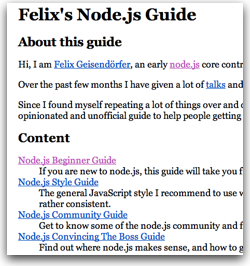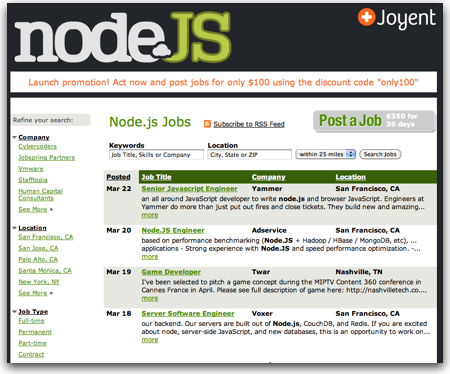 Today Voxeo[1] launched SMSified a new service that lets you use a really simple RESTful API to send text messages within the US for only 1 cent per message. I and other colleagues have been writing about SMSified on the SMSified blog and after writing a tutorial about using SMSified with curl, I figured I’d play around with python a bit and code up an example of sending a SMS via python.
Today Voxeo[1] launched SMSified a new service that lets you use a really simple RESTful API to send text messages within the US for only 1 cent per message. I and other colleagues have been writing about SMSified on the SMSified blog and after writing a tutorial about using SMSified with curl, I figured I’d play around with python a bit and code up an example of sending a SMS via python.
So here it is… stored up in my Github account, but also here:
#!/usr/bin/env python
# Really simple python app for playing with sending SMS messages
# via SMSified - http://www.smsified.com/
# Created by Dan York - May 2011
import json
import urllib
senderid = "dandemo" #SMSified account
password = "notmyrealpassword" #SMSified password
sendernum = "5853260800" #SMSified phone number
apiurl = "https://"+senderid+":"+password+"@api.smsified.com/v1/
smsmessaging/outbound/"+sendernum+"/requests"
address = "14079678424" # Phone num to which you want to send
message = "Hello there" # Whatever msg you want to send
data = urllib.urlencode((('address',address),('message',message)))
f = urllib.urlopen(apiurl,data)
print json.loads(f.read())['resourceReference']['resourceURL']
As you can see in the code, there are really only three lines of importance: the one building “apiurl”; the one urlencoding the data; and the one opening the URL. The rest are really just for the convenience of using variables.
The final line simply prints out the info included in the result JSON. I was going to (and still may) make that print out prettier or say something more… and if you are reading this sometime in the future, the version on Github may have already morphed and evolved into something different. The point is that now that you get JSON back, you can parse it and start to take action on it.
Anyway, this was just a quick sample app to experiment with SMSified. If you have checked out the new service, it’s free to set up a developer account and currently is free entirely during the beta period.
[1] In full disclosure, Voxeo is my employer.


 Would you like to create your own SMS interface to Twitter? To be able to post your own tweets via SMS? Or would you like to have an IM interface to Twitter using Jabber, GoogleTalk, AIM, MSN, Yahoo, etc?
Would you like to create your own SMS interface to Twitter? To be able to post your own tweets via SMS? Or would you like to have an IM interface to Twitter using Jabber, GoogleTalk, AIM, MSN, Yahoo, etc?

 Want to learn more about
Want to learn more about 